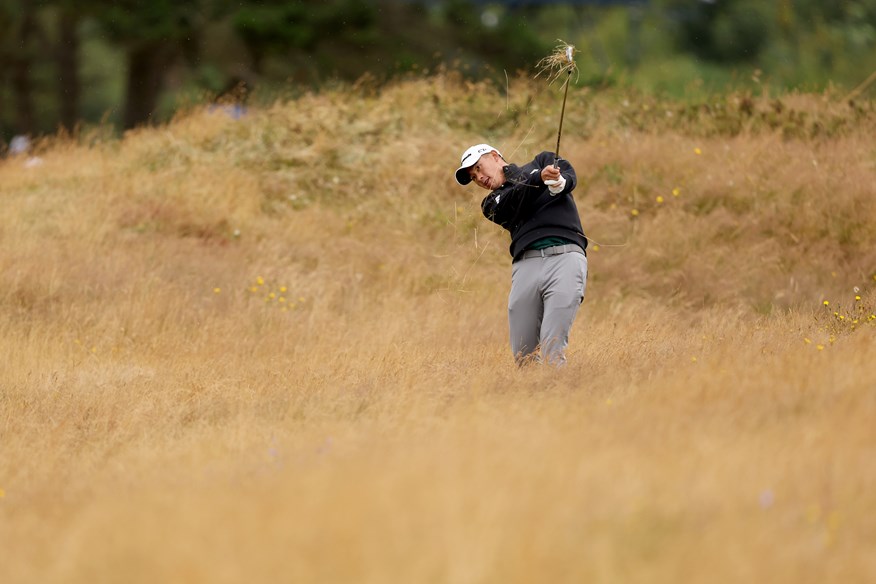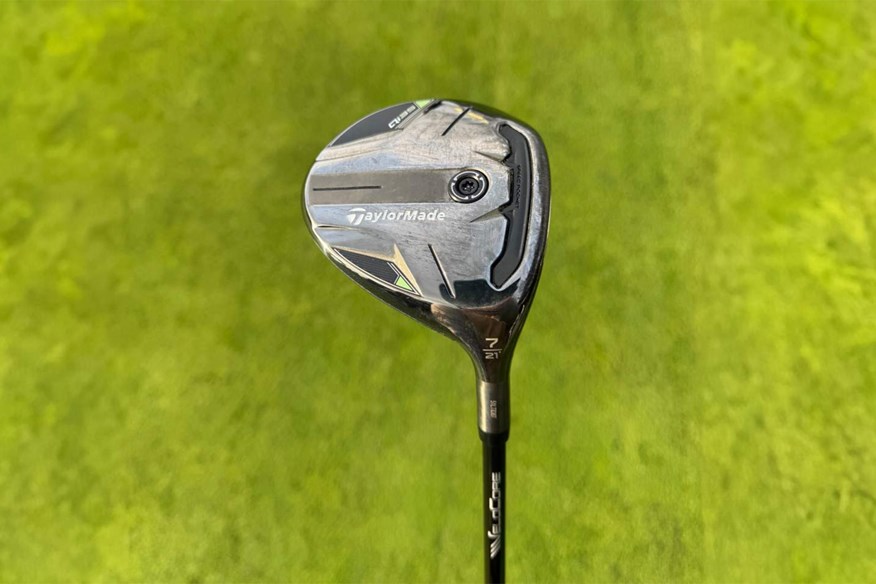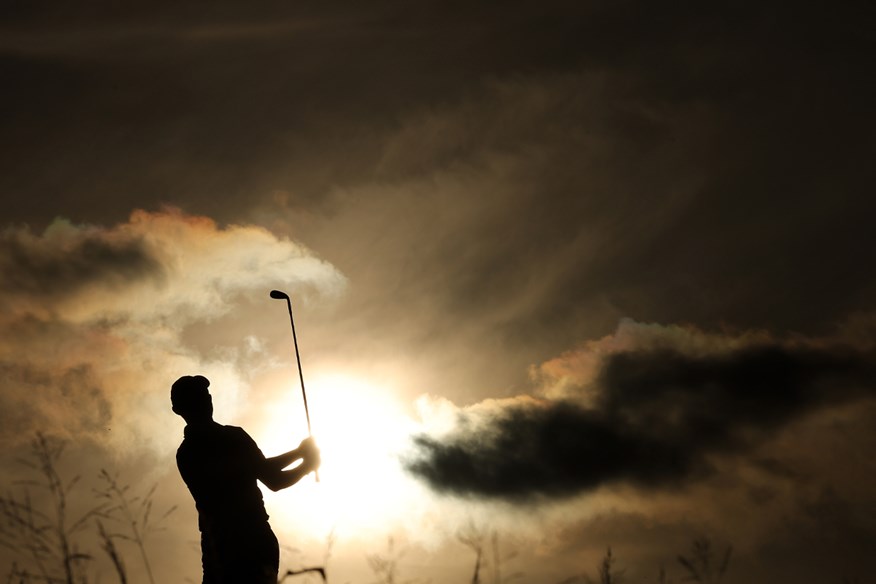It’s time you tried the golf club this two-time major champ says is so good it’s “like cheating”
Last updated:
The rough at Oakmont is savage, but Collin Morikawa has a smart solution. Find out what’s in his bag for the US Open and how it could help your game, too.
If you’ve caught even five seconds of US Open coverage this week, you’ll know Oakmont‘s rough is utterly brutal.
The world’s best players are used to being able to bomb their drives as far as possible without having to worry too much about accuracy, knowing they can easily hit iron shots from the rough onto the green with height, spin, and stopping power.
But not in the US Open. And certainly not at Oakmont.
Miss the fairway and you’re in grass so thick and juicy it could open a smoothie bar. Even the game’s most powerful players are having to take their medicine and gouge it out. Get greedy, try to muscle a long iron from a bad lie, and you’re more likely to flub it two yards than get it anywhere near the green.
If you tend to struggle when you’re in the long stuff – even if it’s not as savage as Oakmont’s – it might be comforting to see the world’s best players humbled in the same way.
But there are also lessons you can learn this week that will help you next time you find yourself in the rough.
Collin Morikawa is a man who knows how to handle the US Open’s gnarly rough. The two-time major champion has finished in the top 15 in the last four US Opens, including T4 and T5 finishes in 2021 and 2022 respectively.
Before getting his tournament underway at Oakmont, the 28-year-old shared his tips for dealing with thick rough – including the secret weapon in his bag he says is “like cheating”.

Collin Morikawa’s top tips for playing from the rough
1. Don’t get greedy if the lie is bad
“When you have really long rough, hitting a 9-iron is going to be more beneficial than trying to hit a 6-iron if the ball is really down – just because you need loft to get out of the rough,” Morikawa explains.
“People don’t understand how thick the rough is. It’s not wispy where the club can glide through, like you sometimes see at The Open.
“This is just thick. Clubs will turn over. You’re going to see guys trying to hit pitching wedge out and it’s going to go 45 degrees left because that’s how thick the rough is. That’s just how you have to play it.”
2. Get steep, with plenty of loft
“You have to get down,” he says. “You have to be steep to get to the ball in the rough, but when you’re steep, it delofts the face, so there’s no loft and you’re just hitting it deeper into the earth. It’s very, very hard.”

3. Check the grass behind the ball
“It’s just knowing where the low point is of your swing and knowing how steep you need to get at the ball,” says Morikawa. “It’s a hard judgment because you have to get steep in the rough, so you have to get steep to get down to the ball, yet you can’t just keep going because there’s no ground to let it bounce off of and then come up.
“It depends on the grass behind it, too. You have to realize: Yeah, the lie looks bad, but it’s also where is the club coming from? it’s coming from behind the ball. So it’s like, ‘Am I going to be hitting a lot of grass, can I get steep to the ball, can I honestly get through the grass to where you don’t have to get it steep?’ That plays a big factor in the shot that’s going to be played and the club [you use].”
4. Or… just cheat. With a 9-wood
“I’ve got a 9-wood,” grins Morikawa. “It’s like cheating.”
And it’s not just Oakmont’s heavy rough where the world No.4 reaches for his 9-wood. “It’s actually amazing,” he says. “If I have 225 out and I need stopping power… I mean it probably goes higher than any other club in my bag. Why wouldn’t you use it?”
Collin Morikawa uses a TaylorMade Qi35 9-wood with a Mitsubishi Mitsubishi Diamana D+ 90 TX shaft



The Qi35 fairway wood is a perfect model for Collin's shot requirements, with the new material construction from the 2025 TaylorMade model optimizing the position of the Center of Gravity, so golfers can have an easier time launching the ball without producing excessive spin.
And Morikawa isn’t alone – more pros are reaching for 7- and 9-woods nowadays.
“The 7-wood is a pretty amazing club out of the rough,” says world No.1 Scottie Scheffler.
So, what makes a 9-wood so effective?
Why a 9-wood might be the best golf club you’ve never tried
I asked TG Equipment Writer Lewis Daff – a former Master Club Fitter and Club Builder with over 5,000 fittings under his belt – why the 9-wood is suddenly golf’s most underrated weapon.
Here’s his breakdown:
More mass = more punch
“You could argue that a bigger head might be harder to get in between thick blades of grass than an iron head, but the extra mass is actually a benefit for consistent delivery,” explains Lewis.
“With a more rearward center of gravity (CG) creating higher moment of inertia (MOI), you get a better resistance to twisting in the 9-wood. A 6-iron can be ‘grabbed’ by the heavy grass, closing the face and lowering the launch and spin. It takes immense strength and speed to prevent that happening – and even the best players in the world struggle to apply that consistently.
“The 9-wood’s profile helps to fight against this problem by leaving the face more open, increasing launch and spin. Couple that with the shallower face and lower CG helping to produce extra launch, and you give yourself an easier time getting the ball out and away from the thick stuff.”
More forgiveness when you need it most
You can’t expect to hit every shot from the rough out of the sweet spot. If the long grass causes you to miss the middle, you want the extra help offered by a fairway wood over an iron, says Lewis.
“If the rough wins some of the battle during the fight through impact, a mis-struck iron, even by a few millimeters, will lose power,” he explains. “The MOI and forgiveness of the 9-wood means you aren’t going to see the ball drop out the air too soon if you do catch the ball out of the toe or heel, because of the increased retention of power from the higher MOI.”
One club to save them all
High-lofted woods were historically the preserve of high handicappers and slow swingers, but not anymore.
“It’s an option that has benefits for every standard of golfer, and another reason we’re seeing more and more high-loft fairway woods in the market,” says Lewis. “They aren’t as one-dimensional as many people still think.”
Elite players including Morrikawa, Xander Schauffele, Dustin Johnson, Tommy Fleetwood, Joaquin Niemann, Ludvig Åberg, and Tyrrell Hatton have all realized the benefits of a high-lofted fairway wood. Is it time you joined them?


